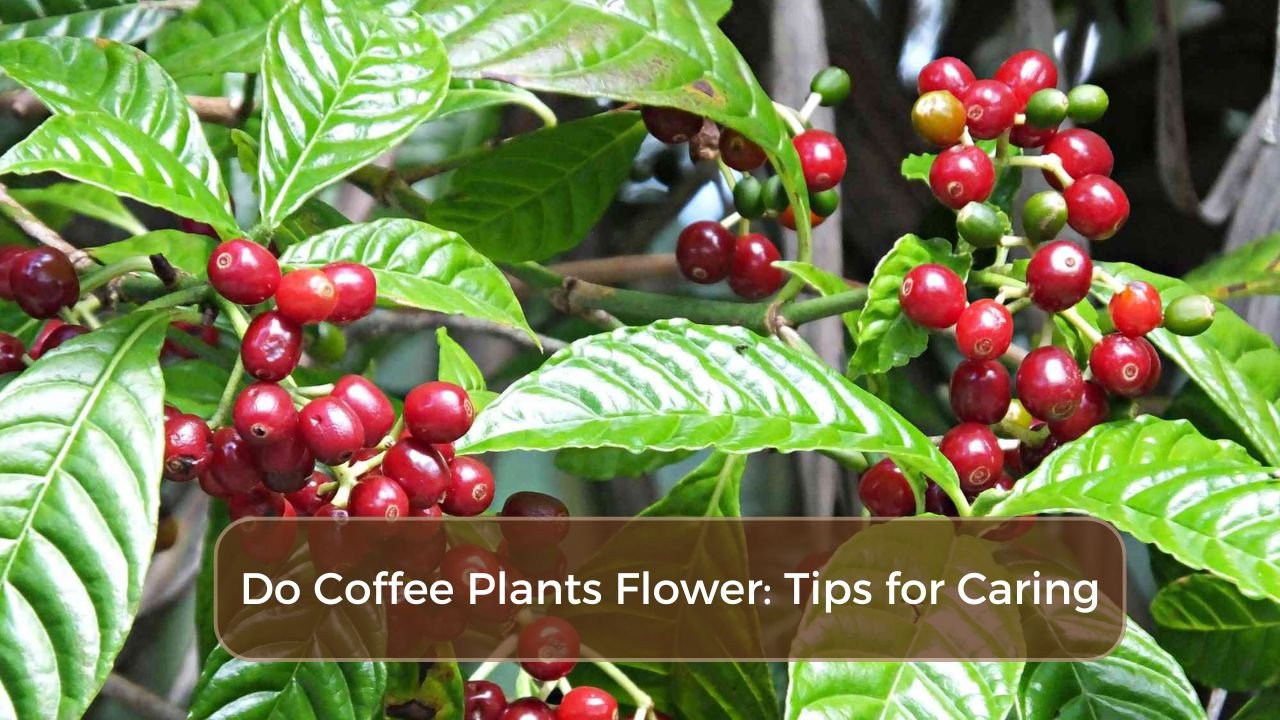Do Coffee Plants Flower? Coffee Growing Facts to Know
Coffee lovers might be surprised to learn that the journey from bean to brew involves a delicate and beautiful process, including flowers. Understanding do coffee plants flower is essential for anyone interested in the intricacies of coffee cultivation.
This article will guide you through the fascinating life cycle of coffee plants, revealing how their blooms play a crucial role in producing the beans we adore. By the end, you’ll appreciate your morning cup of coffee even more.
All About the Coffee Plant
Coffee plants are typically small trees or shrubs that can grow up to 10 feet tall, although they are usually pruned to be more manageable. They produce beautiful white flowers that smell similar to jasmine, which eventually give way to red or purple cherries.
| Common name: | Coffee plant, Arabian coffee |
| Botanical name: | Coffee Arabica |
| Plant type: | Perennial |
| Family: | Rubiaceae, Madder |
| Full size: | 6 to 15 feet tall and 6 to 15 feet wide |
| Bloom time: | Spring |
| Flower color: | White |
| Exposure: | Partial sun |
| Soil pH: | Acidic |
| Soil type: | Moist |
| Native area: | Africa |
| Hardiness zone: | 9 to 11 (USDA) |
| Toxicity: | Toxic to humans and pets |
What Are the Different Types of Coffee Plants?
There are several types of coffee plants, but the three most popular ones are discussed below.
Coffea Arabica Nana
It is a great choice for anyone wanting to grow coffee indoors, especially if space is limited. This dwarf variety only reaches about 12 inches in height, making it perfect for small pots or shelves.

With its lush green leaves and attractive appearance, it can also serve as a lovely houseplant.
Coffea Liberica
It is a unique coffee species that originates from western and central Africa. Its beans are larger than those of the more commonly known Arabica and Robusta varieties.

Liberica beans contain more caffeine than Arabica but less than Robusta, making them a middle ground in terms of caffeine content. This coffee is known for its distinct fruity and floral flavor profile, which sets it apart from other types of coffee.
Coffea Canephora
It is commonly known as Robusta coffee, originates from sub-Saharan Africa. It’s known for its hardiness and ability to thrive in harsher conditions compared to Arabica coffee.

Many people find its flavor to be more bitter and intense, which can make it less popular among coffee enthusiasts. Despite this, Robusta is often used in espresso blends and instant coffee due to its strong caffeine content and rich crema.
Tips for Caring for Your Coffee Plant
Caring for your coffee plant is relatively straightforward and can be quite rewarding. Here are some simple and easy tips for your coffee plant.
Give It Plenty of Sunlight
Coffee plants thrive best in warmer climates, but they can adapt to different light conditions. In cooler areas, it’s essential to provide them with full sunlight to help them grow strong and healthy.
If you live in a tropical environment, your coffee plants will do well with dappled sunlight, which mimics their natural habitat.
Keep the Temperature Warm
To keep your coffee plants thriving, it’s essential to maintain a warm temperature between 65 and 75.2 degrees Fahrenheit. If the temperature drops below 65 degrees, your plants may struggle to bloom and could suffer overall.
During the colder months, consider bringing your coffee plants indoors and using LED grow lights to provide the warmth and light they need.
A cozy environment with plenty of sunlight will help your coffee plants flourish. By following these simple tips, you’ll be on your way to a healthy and productive coffee garden.
Conclusion:
Coffee plants do indeed flower, and these blossoms play a crucial role in the development of the coffee cherries that we all love. Understanding the flowering process can give you deeper insight into how coffee is cultivated and the time it takes for a plant to produce its prized beans.
From the beautiful white flowers to the eventual ripening of cherries, each step is vital in creating the perfect cup of coffee. If you’re a coffee enthusiast or simply curious about the journey from plant to brew, consider exploring more about the life cycle of coffee plants. Dive into this fascinating world and appreciate the artistry behind your daily cup!
FAQ’s
How long do coffee flowers last?
Coffee flowers typically last for about three to five days once they bloom. During this short period, they are most fragrant and attract pollinators, which are crucial for the coffee fruit’s development. After flowering, the blossoms will quickly give way to tiny green coffee cherries, marking the beginning of the coffee-growing cycle.
What happens after coffee plants flower?
After coffee plants flower, the flowers eventually fall off, and small green berries begin to form in their place. These berries, known as coffee cherries, take several months to mature. As they ripen, they change color from green to yellow, then red, signaling that they are ready for harvesting.
Can you grow coffee plants indoors?
Yes, you can grow coffee plants indoors! They thrive in bright, indirect sunlight and prefer a warm, humid environment. Just make sure to water them regularly and provide well-draining soil to keep them healthy and happy.







